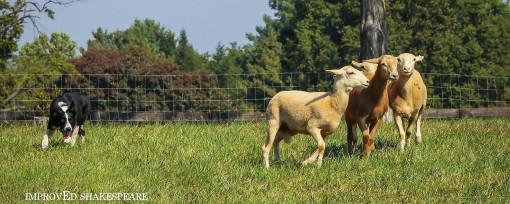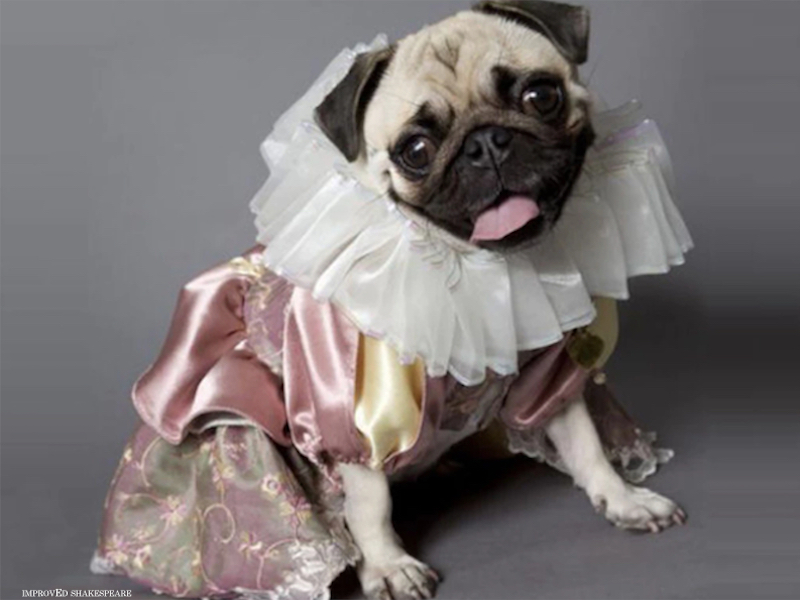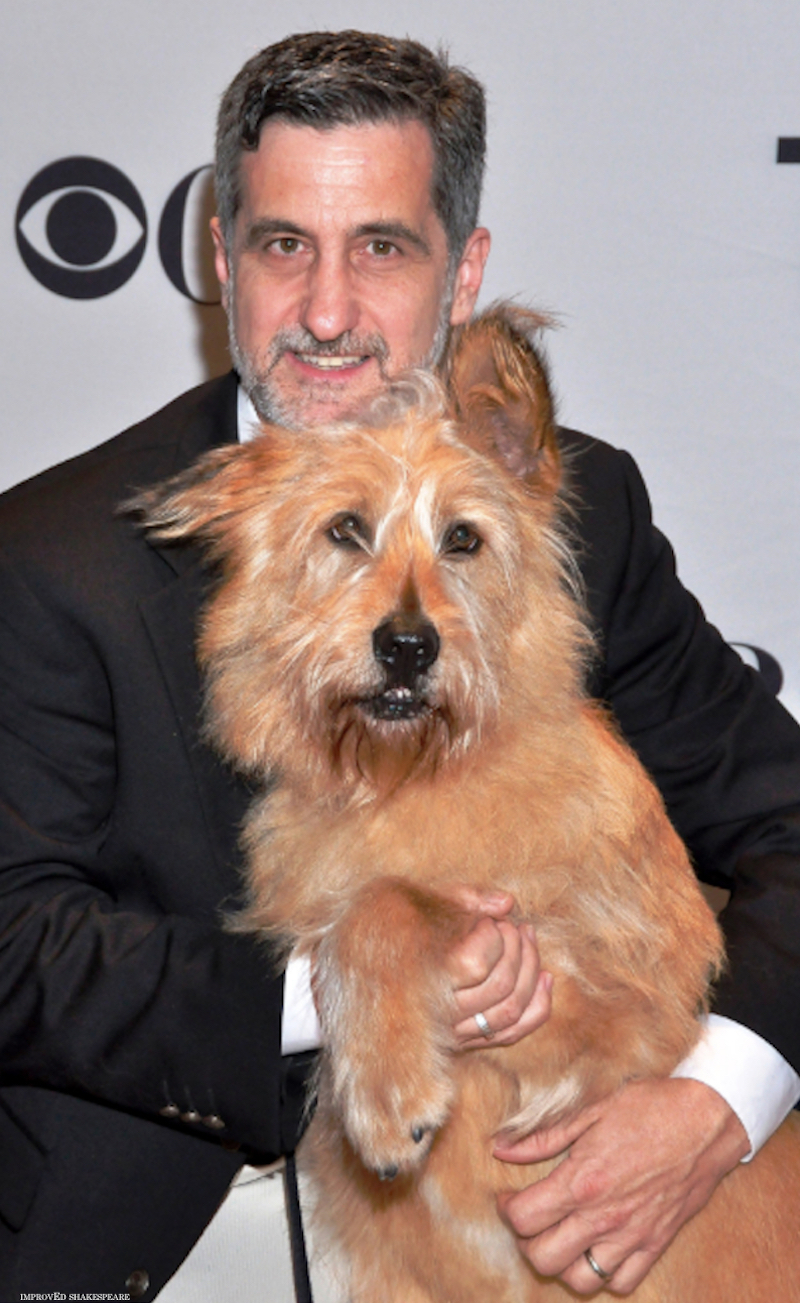“Working Dogs, True False?”
| by Hamlet, Princess of Denmark |
Pug-let: The First Ever All-Pug Production of Hamlet by Kevin Broccoli
[the_ad id=”4426″]
Today, I had a discussion with friends about dogs during the Renaissance era. And, the main issue was, Working Dogs, True False?
Some of the disagreements were about what dogs were to people. Half of us thought that people needed dogs back then purely for work, hunting, etc. But, the other half thought that people treated them more like today, the cute, cuddly creatures that we know and adore.
So, I gathered together some articles that can help YOU decide. Please share your thoughts in the comments!
Another Writer’s Perspective
Helen B. Wharton wrote a guest article for Bella Online about “Dogs in the Renaissance.”
Ever since people first domesticated a few wolves, the dog has held a special place in our hearts, lives, and households. This was as true during the Renaissance as it is now.
Today there are hundreds of breeds of dogs, recognized by kennel clubs around the world. All have been bred to look the way they do for a specific purpose, whether that be as a companion around the house, a helper in the hunt, a herder. Although there were fewer known breeds of dogs during the Renaissance, they served much the same purposes.
Protection was a very important function of dogs during the Renaissance. Homes, manor houses as well as flocks of sheep all required protection. Some breeds that served this purpose during the Renaissance are still known today, such as the Mastiff, the Irish Wolfhound, the Norwegian Elkhound, and the Bloodhound. It was standard practice for all guests in a castle or manor to be indoors and accounted for before the dogs were let out for the night because the dogs were trained to attack all trespassers.
Small and Big
Dogs were also an important part of sporting events. Hunting with dogs was so popular with English nobility during the reign of Queen Elizabeth I that the number of Greyhounds a person could own depended on their political rank. Common folk were not allowed to own a Greyhound at all. Poodles were also kept for hunting but were called Water Dogs.
Small companion dogs were not only kept for company, but were also frequently kept for their warmth. What we call lap dogs were commonly used as foot warmers. You can imagine how cold an unheated Gothic Cathedral would be so many people took their small dogs with them to Mass, to lie at their feet and keep their feet warm. Small Spaniels were often kept for this reason as well as the Bichon Frise.
Terriers or “earth dogs” were used to keep the population of mice, rats, and moles in check. These little dogs also served as companions and foot warmer.
I don’t know about you, but I found that very informative! Since I own a terrier, I have to agree with her on the last part. Because you see, my pooch is a great foot warmer and a loyal friend.
My Take On A Dog’s Life
Working Dogs, True, False? The site Random Facts has 99.
- Mixed breeds of peasants’ dogs were required to wear blocks around their necks to keep them from breeding with noble hunting dogs.
- Purebred dogs were costly, and hunting became the province of the rich.
- During the Middle Ages, Great Danes and Mastiffs were sometimes suited with armor and spiked collars to enter a battle or to defend supply caravans.
- The phrase “raining cats and dogs” originated in seventeenth-century England. During heavy rainstorms, many homeless animals would drown and float down the streets, giving the appearance that it had actually rained cats and dogs.
- One of Shakespeare’s most mischievous characters is Crab, the dog belonging to Launce in the Two Gentlemen of Verona. The word “watchdog” is first found in The Tempest.
- The Beagle came into prominence in the 1300s and 1400s during the days of King Henry VII of England. Elizabeth I was fond of Pocket Beagles, which were only 9″ high.
Real Life
Personally, I am quite fond of beagles, but I never knew there were miniature beagles!
I do know that I have only come across two dogs in my ImprovEd Shakespeare repertoire. We aren’t allowed to use live dogs, sadly. Anita Gates agrees with me in the NY Times:
William Berloni with Oliver, who is in “The Two Gentlemen of Verona.” Tony Award Productions | http://www.nytimes.com
[the_ad id=”4426″]
You don’t see a lot of dogs in Shakespeare’s plays. Actually, you don’t see any — except Crab. In all the histories, tragedies, comedies and tragicomedies, a dog makes an appearance in only one: “The Two Gentlemen of Verona,” which Shakespeare on the Sound is presenting this month in Rowayton. The dog, Crab, has no lines and only one scene, but it seems inevitable that Oliver, the shaggy 65-pound mutt who plays him, will be an audience favorite.
Shakespeare may not have included many roles specifically for dogs in his plays. But, that doesn’t stop us modern dog lovers from mixing Shakespeare and mutts. One guy even raised money on a Kickstarter campaign to stage an all pug version of Hamlet: Pug-let.
Awesome, right? Do you know any additional facts about dogs in the Renaissance? Can you point me to more sites with information? Please let me know in the comments! Plus, tell me what you think about Working Dogs, True False?
[the_ad id=”4426″]
SHAKESPEARE FOR ALL
Working with Shakespeare in education frightens many. Because Shakespeare experts, including professionals, surround us. Escaping them is difficult. This can be intimidating. Thus, feelings of dread usually accompany the act of presenting, but moreover be introduced to, the Bard.
For this reason, ImprovEd Shakespeare is here to help. Founder and Director, Andee Kinzy, offers the layman’s approach to Shakespeare.
[the_ad id=”4426″]
SHAKESPEARE FOR TEACHERS AND DIRECTORS
If you’re an English teacher, a theatre director, or a well-trained Shakespeare advocate, here you will find inspiration, as well as techniques, for making our favorite bard fun for Kids. Accordingly, we present old, new and improved ideas for introducing Shakespeare to youth for the non-Shakespeare-academic. Among them, we include theatre games, improvisation, tips, tricks, plus activities for using Shakespeare in education.
SHAKESPEARE FOR KIDS
Since 2011, ImprovEd Shakespeare has been exploring the Bard with youth through theatrical performance. Our signature scripts are a mix of modern narration plus original Shakespeare verse. With a focus on the story, including an abbreviated script length, our productions entertain all ages. Moreover, our catalog goes beyond the oft-used Midsummer Night’s Dream, or Romeo and Juliet. We’ve discovered that young people find much to their delight among many of Shakespeare’s works. Consider subscribing to our YouTube channel for family-friendly Shakespeare videos.
PERFORMANCES
Each fall and spring, ImprovEd Shakespeare develops a new production for live performance. In honor of the traditional Renaissance traveling troupe, during a period of a few weeks, we present Kid-friendly plays at various venues around town. Our Players, between 3rd-11th grade, gear themselves with playful, as well as engaging interpretations of works by the Bard of Avon. Suitable for all ages, each performance runs for about an hour.
Furthermore, these shows are always FREE. However, we gladly accept Donations! Additionally, visit ImprovEd Shakespeare, Shakespeare for Kids by Kids on Facebook, Instagram, & Twitter. And don’t forget to click on our BLOG for the stories behind these videos.





